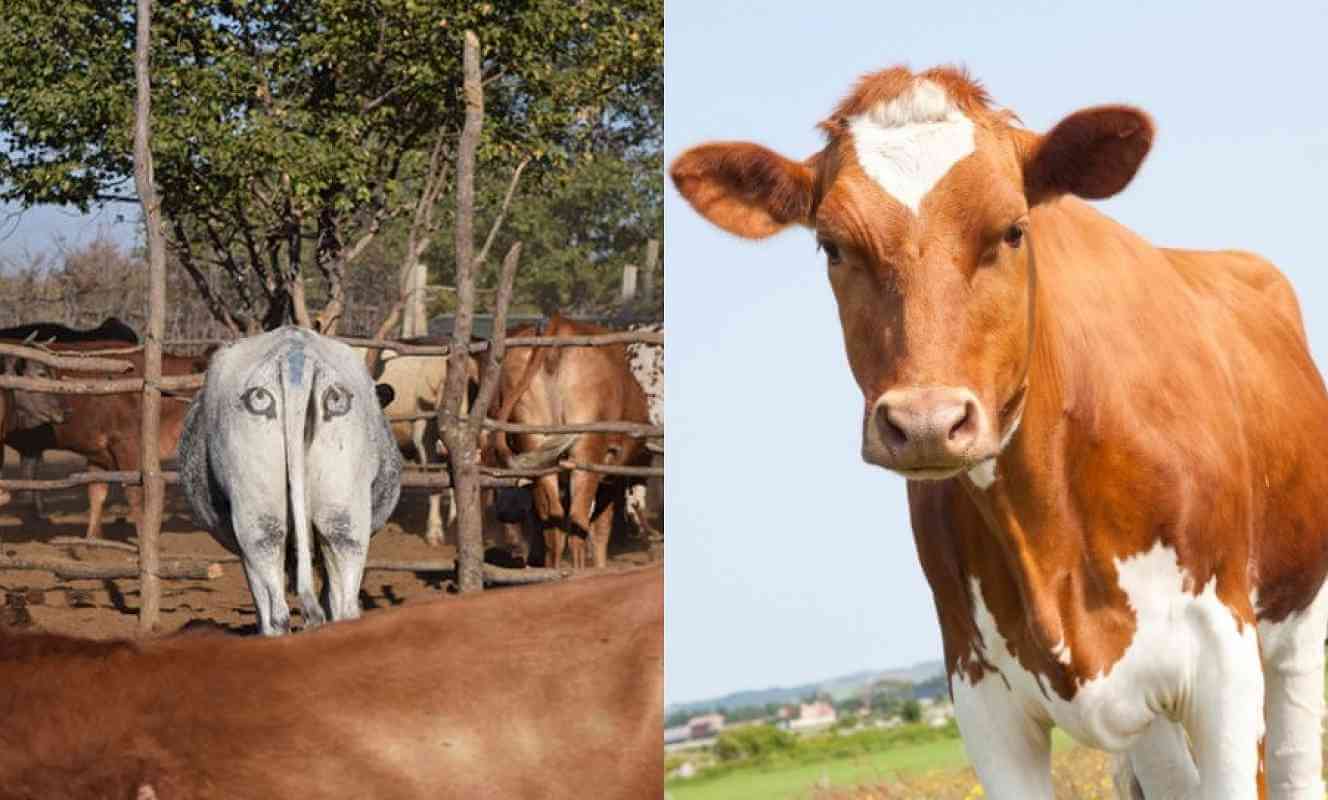You may be surprised at the solution concerning the problem of cows being attacked by leopards, lion, and other predators. You may not even believe your own eyes, even though the solution has to deal directly with this part of the body.
Botswana Predator Conservation, along with the Taronga Conservation Society Australia, found an unusual trick that should help keep predators from attacking cows in the field. What is it? They found that cows that have large, obvious eyes painted on their hindquarters are less likely to be targets of surrounding predators. Yes, you read that right! Communications Biology has since published a paper on the unusual findings.
When predators attack cattle, it isn’t just the cows that lose their lives. Farmers often have no choice but to thwart or stop attacks by poisoning or shooting the attacking animals. Because of this, the number of predators in the wild are affected, such as leopards and lions. Additionally, a cow killed by a predator is a loss to both the farmer and the community who would have benefited from the dairy and meat. It is an unfortunate lose-lose situation that farmers have been battling for decades.
A researcher from the University of New South Wales, Dr. Neil Jordan, spearheaded the unique idea of painting eyes on the back ends of the cattle. After noticing a lion dart away from an impala that happened to look back toward their predator, he realized that predatory animals generally plan their attack by the element of surprise. During the hunt, a lion or other predator will often run away if the animal it is hunting returns their gaze.
Dr. Jordan decided that this response could be built on when it came to livestock losses. To find out the truth of the theory, researchers gathered 2,061 cows throughout 14 herds. One-third of the cattle had no markings, one-third were painted with cross-marks, and the last third received the eye paintings. The cattle stayed inside of their enclosed areas, fenced off from outside intruders such as lions, cheetahs, and African wild dogs.
The results were fascinating. Out of 835 eye-marked cows, not one was killed by predators. Four cross-marked cows and 15 of the 835 completely unmarked cows were killed. Lions were recorded to be the most vicious when it came to outside predators, killing 18 cows total.
The researchers also saw something unexpected. Even though the eye markings worked better, the simple cross markings also protected the cows more than those unmarked. They dubbed it the general “conspicuousness” effect.
While this may sound like great news for the farmers who are tired of losing cows to the wild, researchers are not sure if this solution will work in the long run. There is a chance that the predators will become accustomed to seeing marked cows and will attack anyway. However, it is a promising solution for species continuation, including both prey and predator.



